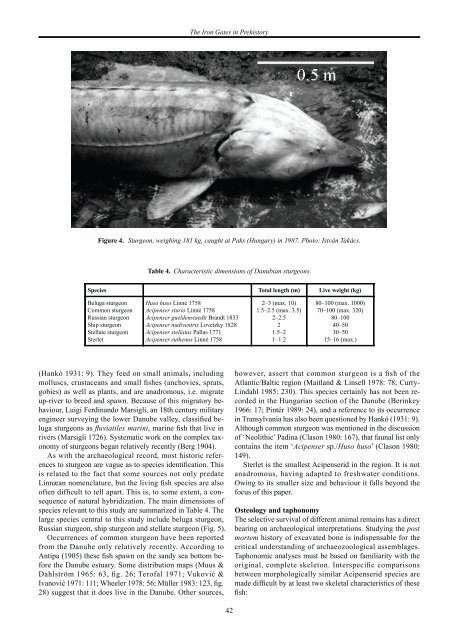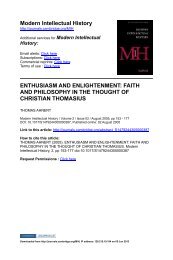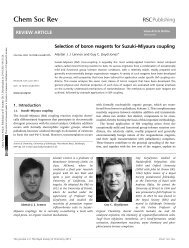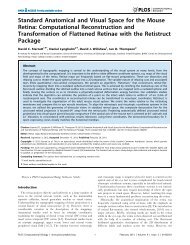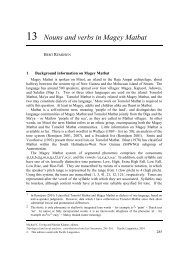Sturgeon fishing in the middle and lower Danube region László ...
Sturgeon fishing in the middle and lower Danube region László ...
Sturgeon fishing in the middle and lower Danube region László ...
You also want an ePaper? Increase the reach of your titles
YUMPU automatically turns print PDFs into web optimized ePapers that Google loves.
(Hankó 1931: 9). They feed on small animals, <strong>in</strong>clud<strong>in</strong>g<br />
molluscs, crustaceans <strong>and</strong> small fishes (anchovies, sprats,<br />
gobies) as well as plants, <strong>and</strong> are anadromous, i.e. migrate<br />
up-river to breed <strong>and</strong> spawn. Because of this migratory behaviour,<br />
Luigi Ferd<strong>in</strong><strong>and</strong>o Marsigli, an 18th century military<br />
eng<strong>in</strong>eer survey<strong>in</strong>g <strong>the</strong> <strong>lower</strong> <strong>Danube</strong> valley, classified beluga<br />
sturgeons as fluviatiles mar<strong>in</strong>i, mar<strong>in</strong>e fish that live <strong>in</strong><br />
rivers (Marsigli 1726). Systematic work on <strong>the</strong> complex taxonomy<br />
of sturgeons began relatively recently (Berg 1904).<br />
As with <strong>the</strong> archaeological record, most historic references<br />
to sturgeon are vague as to species identification. This<br />
is related to <strong>the</strong> fact that some sources not only predate<br />
L<strong>in</strong>næan nomenclature, but <strong>the</strong> liv<strong>in</strong>g fish species are also<br />
often difficult to tell apart. This is, to some extent, a consequence<br />
of natural hybridization. The ma<strong>in</strong> dimensions of<br />
species relevant to this study are summarized <strong>in</strong> Table 4. The<br />
large species central to this study <strong>in</strong>clude beluga sturgeon,<br />
Russian sturgeon, ship sturgeon <strong>and</strong> stellate sturgeon (Fig. 5).<br />
Occurrences of common sturgeon have been reported<br />
from <strong>the</strong> <strong>Danube</strong> only relatively recently. Accord<strong>in</strong>g to<br />
Antipa (1905) <strong>the</strong>se fish spawn on <strong>the</strong> s<strong>and</strong>y sea bottom before<br />
<strong>the</strong> <strong>Danube</strong> estuary. Some distribution maps (Muus &<br />
Dahlström 1965: 63, fig. 26; Terofal 1971; Vuković &<br />
Ivanović 1971: 111; Wheeler 1978: 56; Müller 1983: 123, fig.<br />
28) suggest that it does live <strong>in</strong> <strong>the</strong> <strong>Danube</strong>. O<strong>the</strong>r sources,<br />
The Iron Gates <strong>in</strong> Prehistory<br />
Figure 4. <strong>Sturgeon</strong>, weigh<strong>in</strong>g 181 kg, caught at Paks (Hungary) <strong>in</strong> 1987. Photo: István Takács.<br />
Species Total length (m)<br />
Beluga sturgeon<br />
Common sturgeon<br />
Russian sturgeon<br />
Ship sturgeon<br />
Stellate sturgeon<br />
Sterlet<br />
Table 4. Characteristic dimensions of Danubian sturgeons.<br />
Huso huso L<strong>in</strong>né 1758<br />
Acipenser sturio L<strong>in</strong>né 1758<br />
Acipenser gueldenstaedti Br<strong>and</strong>t 1833<br />
Acipenser nudiventris Lovetzky 1828<br />
Acipenser stellatus Pallas 1771<br />
Acipenser ru<strong>the</strong>nus L<strong>in</strong>né 1758<br />
42<br />
2–3 (max. 10)<br />
1.5–2.5 (max. 3.5)<br />
2–2.5<br />
2<br />
1.5–2<br />
1–1.2<br />
Live weight (kg)<br />
80–100 (max. 1000)<br />
70–100 (max. 320)<br />
80–100<br />
40–50<br />
30–50<br />
15–16 (max.)<br />
however, assert that common sturgeon is a fish of <strong>the</strong><br />
Atlantic/Baltic <strong>region</strong> (Maitl<strong>and</strong> & L<strong>in</strong>sell 1978: 78; Curry-<br />
L<strong>in</strong>dahl 1985: 230). This species certa<strong>in</strong>ly has not been recorded<br />
<strong>in</strong> <strong>the</strong> Hungarian section of <strong>the</strong> <strong>Danube</strong> (Ber<strong>in</strong>key<br />
1966: 17; P<strong>in</strong>tér 1989: 24), <strong>and</strong> a reference to its occurrence<br />
<strong>in</strong> Transylvania has also been questioned by Hankó (1931: 9).<br />
Although common sturgeon was mentioned <strong>in</strong> <strong>the</strong> discussion<br />
of ‘Neolithic’ Pad<strong>in</strong>a (Clason 1980: 167), that faunal list only<br />
conta<strong>in</strong>s <strong>the</strong> item ‘Acipenser sp./Huso huso’ (Clason 1980:<br />
149).<br />
Sterlet is <strong>the</strong> smallest Acipenserid <strong>in</strong> <strong>the</strong> <strong>region</strong>. It is not<br />
anadromous, hav<strong>in</strong>g adapted to freshwater conditions.<br />
Ow<strong>in</strong>g to its smaller size <strong>and</strong> behaviour it falls beyond <strong>the</strong><br />
focus of this paper.<br />
Osteology <strong>and</strong> taphonomy<br />
The selective survival of different animal rema<strong>in</strong>s has a direct<br />
bear<strong>in</strong>g on archaeological <strong>in</strong>terpretations. Study<strong>in</strong>g <strong>the</strong> post<br />
mortem history of excavated bone is <strong>in</strong>dispensable for <strong>the</strong><br />
critical underst<strong>and</strong><strong>in</strong>g of archaeozoological assemblages.<br />
Taphonomic analyses must be based on familiarity with <strong>the</strong><br />
orig<strong>in</strong>al, complete skeleton. Interspecific comparisons<br />
between morphologically similar Acipenserid species are<br />
made difficult by at least two skeletal characteristics of <strong>the</strong>se<br />
fish:


